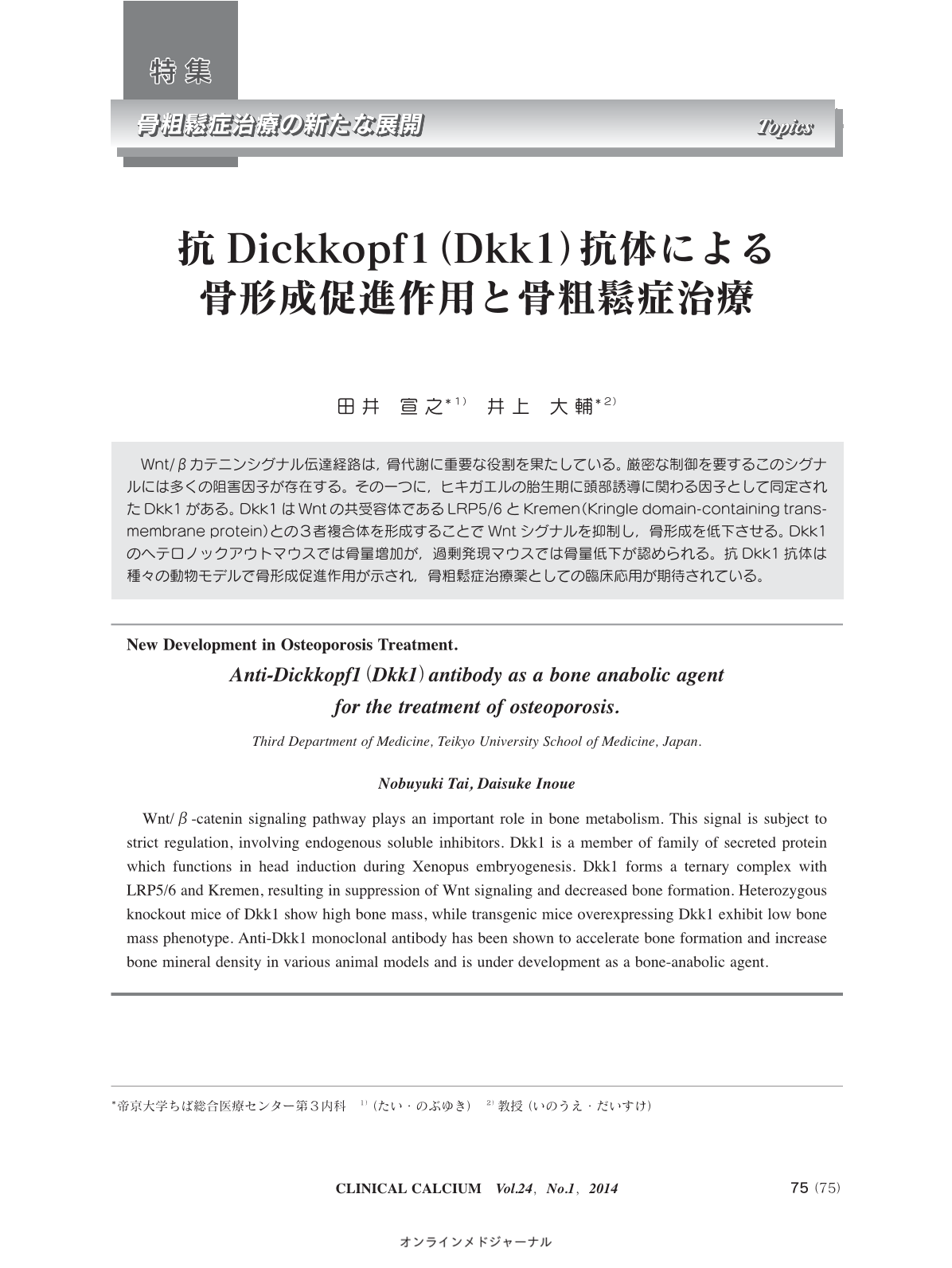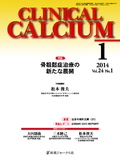Japanese
English
- 有料閲覧
- Abstract 文献概要
- 1ページ目 Look Inside
- 参考文献 Reference
Wnt/βカテニンシグナル伝達経路は,骨代謝に重要な役割を果たしている。厳密な制御を要するこのシグナルには多くの阻害因子が存在する。その一つに,ヒキガエルの胎生期に頭部誘導に関わる因子として同定されたDkk1がある。Dkk1はWntの共受容体であるLRP5/6とKremen(Kringle domain-containing transmembrane protein)との3者複合体を形成することでWntシグナルを抑制し,骨形成を低下させる。Dkk1のヘテロノックアウトマウスでは骨量増加が,過剰発現マウスでは骨量低下が認められる。抗Dkk1抗体は種々の動物モデルで骨形成促進作用が示され,骨粗鬆症治療薬としての臨床応用が期待されている。
Wnt/β-catenin signaling pathway plays an important role in bone metabolism. This signal is subject to strict regulation, involving endogenous soluble inhibitors. Dkk1 is a member of family of secreted protein which functions in head induction during Xenopus embryogenesis. Dkk1 forms a ternary complex with LRP5/6 and Kremen, resulting in suppression of Wnt signaling and decreased bone formation. Heterozygous knockout mice of Dkk1 show high bone mass, while transgenic mice overexpressing Dkk1 exhibit low bone mass phenotype. Anti-Dkk1 monoclonal antibody has been shown to accelerate bone formation and increase bone mineral density in various animal models and is under development as a bone-anabolic agent.



